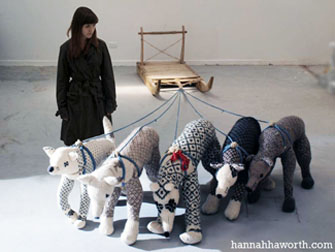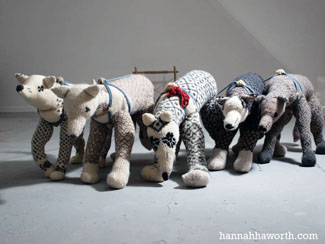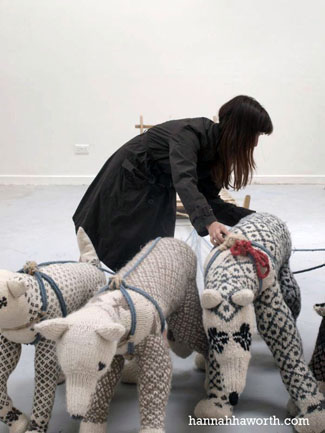From the Editor: Romancing the Bone –
Unreasonable notions and unrealistic expectations
Kevin Walton Memorial Lecture
QTC’s Community Consultation Tour
An Examination of Traditional Knowledge:
The Case of the Inuit Sled Dog, Part 3
'The Hunt'
OP Nunalivut 10
CAAT Returns to Baker Lake
New to the Crew: Introducing Adult ISDs to Your Kennel
IMHO: Some Things Never Change
Navigating This Site
Index of articles by subject
Index of back issues by volume number
Search The Fan Hitch
Articles to download and print
Ordering Ken MacRury's Thesis
Our comprehensive list of resources
Talk to The Fan Hitch
The Fan Hitch home page
ISDI home page
Editor-in-Chief: Sue Hamilton
Webmaster: Mark Hamilton
Print Edition: Imaged and distributed by the IPL students of the Ulluriaq School, Kangiqsualujjuaq, Nunavik
The Fan Hitch,
Journal of the Inuit Sled Dog International,
is published four times a year. It is
available at no cost online at:
https://thefanhitch.org.
Print subscriptions: in Canada $20.00, in USA $23.00, elsewhere $32.00 per year, postage included. All prices are in Canadian dollars. Make checks payable in Canadian dollars only to "Mark Brazeau", and send to Mark Brazeau, Box 151 Kangiqsualujjuaq QC J0M 1N0 Canada. (Back issues are also available. Contact Sue Hamilton.)
The Fan Hitch welcomes your letters, stories, comments and suggestions. The editorial staff reserves the right to edit submissions used for publication.
Contents of The Fan Hitch are protected by international copyright laws. No photo, drawing or text may be reproduced in any form without written consent. Webmasters please note: written consent is necessary before linking this site to yours! Please forward requests to Sue Hamilton, 55 Town Line Rd., Harwinton, Connecticut 06791, USA or mail@thefanhitch.org
Print subscriptions: in Canada $20.00, in USA $23.00, elsewhere $32.00 per year, postage included. All prices are in Canadian dollars. Make checks payable in Canadian dollars only to "Mark Brazeau", and send to Mark Brazeau, Box 151 Kangiqsualujjuaq QC J0M 1N0 Canada. (Back issues are also available. Contact Sue Hamilton.)
The Fan Hitch welcomes your letters, stories, comments and suggestions. The editorial staff reserves the right to edit submissions used for publication.
Contents of The Fan Hitch are protected by international copyright laws. No photo, drawing or text may be reproduced in any form without written consent. Webmasters please note: written consent is necessary before linking this site to yours! Please forward requests to Sue Hamilton, 55 Town Line Rd., Harwinton, Connecticut 06791, USA or mail@thefanhitch.org
The Inuit Sled Dog International
The Inuit Sled Dog International (ISDI) is a consortium of enthusiasts whose goal is the preservation of this ancient arctic breed in its purest form as a working dog. The ISDI's efforts are concentrated on restoring the pure Inuit Dog to its native habitat. The ISDI's coordinators welcome to your comments and questions.
ISDI Coordinator Canada:
Geneviève Montcombroux, Box 206, Inwood, MB R0C 1P0; gmontcombroux@gmail.com
ISDI Coordinator USA:
Sue Hamilton, 55 Town Line Road, Harwinton, CT 06791, mail@thefanhitch.org

Hannah Haworth gives her work a critical eye.
Photo: Ysolda Teague
'The Hunt'…by Hannah Haworth
TFH: Tell us about yourself.
HH: I've been studying in Edinburgh, Scotland for five years and I am currently in my final year of sculpture at Edinburgh College of Art (Edinburgh University).
Although I was born in Scotland, I grew up in a small tribal village in the Philippines, where I'd practice weaving, beading and other handicrafts with the local women. These experiences really sparked a long-term obsession with traditional handicraft. When my family moved back to Scotland ten years later, I became fascinated with Scottish handicraft. It was completely different than what I had seen in the Philippines, but the basic purposes ran through. Because of my background, I really had to try out some Scottish weaving, knitting and felting - I felt connected to it somehow and I wanted to be able to do it well. And so my work has led me to explore traditions all over the Northern regions of the world, because survival in these climates still amazes me and craft is almost unavoidably the life support for living off the land in such conditions.
TFH: When did you first have an interest in sled dogs?
HH: My research meandered into dog sledding about a year ago when I was studying in New York. (Although strangely enough, my favorite book when I was wee was Balto which, naturally, I read in our bamboo hut in the Philippine jungle.) My fiancé and I got itchy feet and took an epic drive across the country to Montana to stay with some friends. It was here we got the opportunity to do some dog sledding, and of course I fell in love (How could you not?)! I'd always found sled dogs to be the most beautiful of dogs in many ways. I love their connection to the land, their rich history and of course their good looks. I've been toying with the idea of adopting a Siberian Husky for a couple of years now, but at the moment I move too much and not to very ideal husky places… one day!
TFH: Why did you choose to create a traditional fan hitch team pulling a qamutiq as your subject matter? Did you give a title to it?
HH: Dog sledding in Montana really moved me and after considering many possibilities for my final year project, I decided that I wanted to make my own team of dogs (and sled). With my northern obsession and love of animals, I had knitted several Arctic creatures and it seemed natural to me to knit my sled dogs. I made them using traditional Norwegian and Fair Isle styles (patterns I had often seen replicated in Inuit beadwork), and charted some animal motifs to include in the stitches to honor the animals they hunt. I wanted to make my sled as traditional as I could, and began to ask around about qamutiq construction (That's how I met Sue Hamilton!). After a lot of emailing with various sources, I assembled the elements I liked from each version I was sent and created my own oak qamutiq.
I read a lot about different ways of hitching - that the dogs are strung out in pairs when the landscape is busier and has trees and that they are in a fan hitch when the landscape is emptier and the ice is vast, common in Greenland (which is where the final design of my sled is predominantly based on). I saw my empty white gallery space more as the latter and I decided that I wanted my dogs in a fan hitch. The piece is accompanied by text on the wall behind the sled. Here is written an Inuit folktale about a man who goes searching for a missing woman and discovers that she has turned into a wolf. The whole work is entitled 'The Hunt'.

Close-up of the team. Photo: Ysolda Teague
HH: The project is for my final year degree show at ECA, I wanted to share with the public a little of Inuit tradition and the handicrafts of the North (remind them of ours, too), and I also put a lot of myself into the work, in terms of the completely handmade aesthetic and my personal history with living from nature.
TFH: What inspired you to undertake a project of this size? Is this the biggest one you've ever worked on? Please describe the dimensions and the length from the tip of the lead dog's nose to the back of the qamutiq.
HH: I really enjoy working big. This year is the first I've had the opportunity to put this much time into one project, so yes, it is my biggest yet! But not the biggest to come…I'm yet to accurately measure my piece, but I would imagine approximately 6m (20ft) from the lead dogs nose to the back of the sled. My dogs vary in size, the largest is almost 2m (79in) from nose to the tip of his tail, and he's just less than a metre (39in) tall. The wee one is about 1.5m (59in) long and maybe a half-metre (20in) tall. The others vary somewhere in between.
TFH: How long has it taken to complete this project?
HH: I started making the first dog in early February, but I have been sketching, model making and researching for about a year and a half now.
TFH: What were the challenges in completing it?
HH: Many!!!! My first hurdle was acquiring all the materials. I'm lucky as my brother is a carpenter and was able to give me all the wood for the qamutiq. However, the yarn was a little trickier! I wrote to several yarn companies and I was able to get sponsorship from a couple of them. But the sheer quantity of yarn needed for a project of this size is huge! And although I was sent many big boxes, I only had enough to complete five dogs for my sled. I had originally hoped to make eight. But after knitting them, I think five really doesn't look so bad! Also, as I do not use any knitting patterns for my work, each dog turned out different from the last, often unpredictably and on occasion, awfully! I've had to rip back at least three dogs in the process, which is heartbreaking as there is so much work and time in each, but it's very important to me to make each to the highest standard I can.
TFH: Will this project be put on display?
HH: 'The Hunt' will be on exhibition at the Edinburgh College of Art degree show from June 10 to June 21, 2010.
TFH: What will happen to it?
HH: I'm not sure. It may be sold or exhibited further, depending on the interest generated from the degree show.
TFH: Do you ever sell any of your work?
HH: I sell online at www.hannahhaworth.com through etsy.com and my work is also available for sale at my exhibitions and through several private galleries in Edinburgh.
TFH: What lies ahead for Hannah Haworth once she's graduated?
HH: I am getting married in September to a lovely New Yorker, and so I will be moving back to NY towards the end of the summer. Here I hope to continue to exhibit and make work, perhaps do some kind of residency. Also, I'd really like to get involved with some more gallery work, perhaps curating in the long term. I have too many things I want to make. I'm desperate to make a full sized polar bear and recently I've been experimenting with traditional printmaking, ceramics and felting. I'd also like to get back into beadwork.

Hannah moves her dogs into position.
Photo: Ysolda Teague